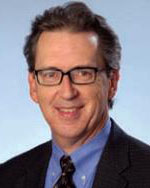Gastroenterology Fellows Need More Training in Detection of Sessile Serrated Lesions
Douglas K. Rex, MD, MASGE, reviewing Vemulapalli KC, et al. Endosc Int Open 2022 May.
Detection skills by gastroenterology fellows are difficult to quantitate. One way to measure detection is to have the fellow perform a complete colonoscopy and clear the colon without any intervention from the attending physician, and then have the attending physician perform a second colonoscopy.
In this study, 10 trainees performed a total of 100 examinations, and an expert colonoscopist with proven high detection rates for both conventional adenomas and sessile serrated lesions (SSLs) completed the second examinations.
Overall, fellows missed 30.5% of the conventional adenomas and 85.7% of SSLs. Among lesions ≥10 mm in size, the fellows missed 26.7% of conventional adenomas and 90.9% of SSLs.

COMMENTThe detection rates in tandem studies are always related to who performs the second examination, and utilizing a high detector in this study maximizes the observed miss rates while simultaneously reflecting miss rates closer to the truth. These data suggest the importance of specific training of GI fellows in detecting SSLs.
Note to readers: At the time we reviewed this paper, its publisher noted that it was not in final form and that subsequent changes might be made.
CITATION(S)
Vemulapalli KC, Lahr RE, Rex DK. Most large colorectal polyps missed by gastroenterology fellows at colonoscopy are sessile serrated lesions. Endosc Int Open 2022;10:E659-663. (https://doi.org/10.1055%2Fa-1784-0959)
